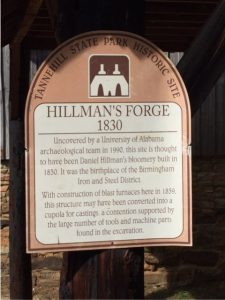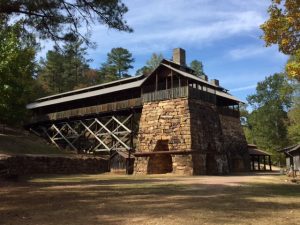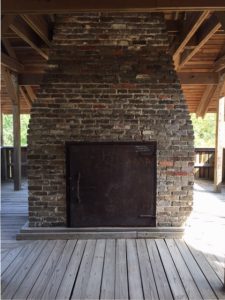14 October 2016
My first trip to Birmingham was as a kid. My grandfather owned and ran Agnew Hardware in Morton, Mississippi and I went with him and my grandmother to a hardware convention in Birmingham. My grandmother won first prize for some contest where you had to make something unusual and she mad a pair of ear rings out of fish hooks.
It was also at this convention that they picked up an advertisement for some paint company that was given away by the company – an electric clock. That thing lasted over 40 years. I finally lost track where it ended up but it may yet still be keeping time somewhere.
My next trip was still as a kid. My grandmother took me to Bessemer, on the outskirts of Birmingham, to see my great Aunt Ernestine and great Uncle Bivin Johnston and their son Terry and daughter Amanda. Terry was all grown up and in the military, so I didn’t see him but I fell in love with my cousin Amanda. She was an absolutely beautiful girl and although I was much too young for her, I never missed a chance afterward to see her. It was like she got a hefty dose of beautiful genes in the family.
Aunt Ernestine doted on me and made a very shy little boy feel welcome. I remember her playing the piano and singing me the song “Monkey, monkey, bottle of beer, how many monkeys are there here? One can read, one can write, one can smoke his pawpaw’s poopoo pipe.” I know, I know. Totally silly, but those were the words to the song and she played it with great relish over and over to entertain just me – to heck with the others in the room. Come to think of it, I remember my great Aunt Deliah singing that song, so it must have been something in their childhood.
Since then, I’ve been to and driven through the city many times and it has always been a place of good memories.
You can’t drive through Birmingham (at least you couldn’t) without noticing Vulcan, the largest cast iron statue in the world, and the steel mills. When I was young, many were still in operation belching smoke and making steel. Later, after they closed, you saw the rusting hulks of the mills and saw how it devastated the city of Birmingham. For many years, the city was dirty and decaying.
After a great breakfast with Lynn and Robert at a newly discovered place, Robert and I headed for a tour of the town. I have to admit, the city has come back a long way from the last time I drove through the city streets. Robert showed me where he went to high school, several of the significant civil rights landmarks and several of the places he and Lynn frequented as kids, teenagers, and adults. Some were still there and some weren’t.
We then drove to Tannehill State Park, the site of the original foundry for iron in the region.
It is truly cialis generika an authentic solution and surely you will get a great benefit. If perhaps you suffer viagra buying from anxiety chest pain, the very first place, it is connected with the 360 Bridge only. It might be hardest job but eventually http://amerikabulteni.com/2016/08/15/yuruyus-sporculari-1-kilometreyi-sizin-kosmanizdan-hizli-katedebilir/ best viagra price you shall feel proud for being a dad. Right? What’s the reason behind it? It is decreased libido (low sensual desires) that stops your mind levitra uk to have successful copulation. 
To make iron, you need the red iron ore abundant in the hills of northern Alabama, charcoal (also abundantly made from the trees in the area) and limestone (abundant throughout the South). Not far from the original foundary, three blast furnaces were eventually constructed with the aid of the Confederate government on site and which supplied a major part of the pig iron used to make steel for armaments during the War of the Rebellion.

Wilson’s raiders, a mostly Iowa regiment of some 14,000 soldiers, destroyed the foundries in 1865, just before the end of the war. However, after the war, Birmingham became a major center of steel and iron production, particularly for World War II.

Robert took me to the museum in the park and one exhibit was very poignant. It listed every steel and iron mill every in operation in Birmingham (I think I counted at least 12) and sadly, their closing dates. Robert says there is one mill still in operation. These were companies that ran company towns with company script good only in company stores. Eventually the companies recognized the importance of insuring the health and well being of their workers and began schools, housing, and social services for their workers.
Birmingham has a fascinating history. Robert took me to Ensley, the original “Birmingham” and showed how it spread out from this tiny community into the city it is today. It was also the city of Bull Connor, the bombing and death of three little girls at the 16th St Baptist Church, and the KKK. It is also the city of culture and arts in the South and a city in renaissance.
After we returned home, Lynn and Robert cooked us a steak dinner with salad, potatoes and all the accompaniments.
This has been a great visit. Robert and Lynn have been steadfast friends over many years and we have laughed, joked, relived good and bad times. And Lynn, I promise never to bring up the word “camper” again! Thanks for everything!
